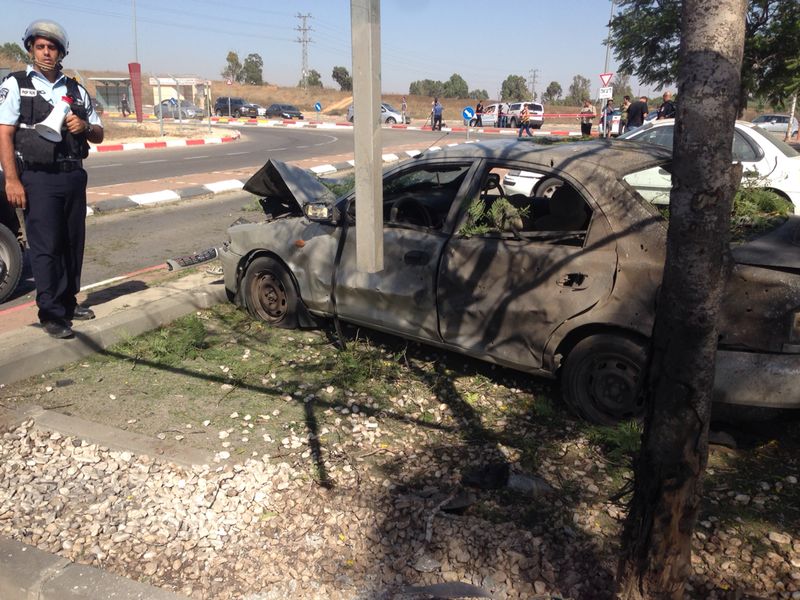The tit-for-tat dance of irreconcilable animus between Israel and Hamas-the democratically elected terrorist group that controls Gaza-continues with 365 rockets having been launched against the Jewish state and more than 200 airstrikes hitting Gazan targets. Approximately 90 Palestinians have been killed since Israel began its counteroffensive-among them were 22 children. More than 500 have been injured. (All figures are accurate as of 7 p.m. EDT Thursday.)
No Israeli casualties have been reported thus far, although one man was reportedly seriously injured when a rocket struck his car.
We’ve been here before. Both in 2008 and again in 2012, Israel responded to unremitting rocket attacks from Gaza-the territory it had only recently abandoned in hopes that it would lead to the building of a Palestinian nation rather than a missile-happy next door neighbor-by unleashing its air force, and even its ground troops, to bring an end to the hailstorm of what was at the time 10,000 Hamas rockets, and still counting.
Not unlike its objectives this week, Israel’s targets in those operations were concealed rocket-launching sites, weapons storage and manufacturing facilities, terrorist command posts (usually located inside residential houses) and secret tunnels. And just like the present Operation Protective Edge, those earlier incursions into Gaza resulted in disproportionately unbalanced losses among Palestinians when compared to the Israeli dead.
Once again human rights organizations, the United Nations secretary-general, and even the American president, are imploring Israel to show restraint and be mindful of its superior military power being exercised in areas where civilians are within the line of fire. At the same time, however, Hamas spokesmen continue to warn Israel that they will seek vengeance against the Jewish state and that all Israelis are their intended targets.
Talk of revenge makes people uneasy, and it’s confusing, too-especially in disputes between nations. The lex talionis provides the basic measurement of how to remedy loss, with its strict “life for a life” formulation-found in Hammurabi’s Code and the Old Testament. Yet, bloodthirstiness is not the objective of vengeance; getting even and settling the score most certainly is. But the avenger is held to a standard of precision in the retaliation he seeks.
The loss of an eye entitles the avenger to no more, and no less, than the wrongdoer’s eye-or its compensatory equivalent. Only through measure-for-measure exactness will the wrongdoer be paid back properly and justly. And by not having sought vengeance disproportionately, the revenge taker is made even and no further reason for revenge becomes necessary.
Under Article 51 of the United Nations Charter, a nation has the right to defend its own citizens. But defending a nation under wartime conditions does not require the precision of “eye for an eye” justice. Among individuals disproportionate revenge is an invitation to a blood feud; in the global arena, however, disproportion is the norm. Whether it was the Allied bombing of Dresden, the atomic detonations in Japan, or the “shock and awe” of Iraq, getting even, globally, often comes with lopsided casualties on one side-including the unbearable loss of civilian lives.
The situation in Gaza is no different and, both practically and morally, it can be no different. Retaliatory responses in such tragic settings will invariably result in equations that simply won’t add up to equivalent losses.
The optics can be deceiving. Hamas fires rockets the way Brazilians dance: all over the place. They have launched thousands of them at Israel since 2005-unsuccessfully but indiscriminately, without any regard to where they might land. (The Iron Dome, increasingly, ensures that those rockets never land.)
When it comes to its retaliatory airstrikes, Israel calls the cell phone numbers of the Palestinians whose houses are about to be bombed; they also drop leaflets from the sky warning residents to evacuate the area. And when it is time to fire, Israel retaliates with pinpoint accuracy. Unfortunately, there are still civilian dead.
Paradoxically the world is holding Israel responsible for Hamas being unable to shoot straight. Israel’s moral position would be stronger if the casualty count was more equal. But under what moral principle must a nation mimic both the madness and the misdirection of its enemy?
Intent and motive always matter. The endgame for Hamas, avowedly in both word and deed, is Jewish genocide. The relevant word here should not be “proportion” but rather “asymmetry”-there is no battlefield on which Israel can fight its sworn enemy. By despicable design, Hamas insists on bringing the theater of war right beside a child’s bedroom, or in the basement of a mosque, or in a hospital or school. Human shields that might end up in body bags and a culture of Islamic martyrdom is the trench warfare that Israelis face whenever they put on their uniforms. The militants are hiding, and their weapons are located, among their own people.
Keeping track of bombs and body counts in Gaza and Israel defies the logic of analytics. If the ledgers of loss are imbalanced, don’t be fooled by the numbers. Disproportionate death tolls, tragic though they may be, are an excuse to place Israel in an utterly indefensible position.









